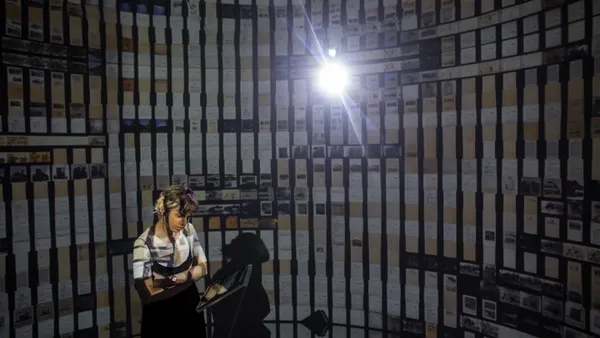Conversations about diversifying the pipeline can feel redundant for progressive HR teams. Theory is important; it’s foundational. But ideals can’t be reached without actionable steps to get there.
At the Society for Human Resource Management's annual conference, Bob Lockett, ADP’s chief diversity and talent officer, led a session — "Disrupt D&I: How To Show Up, Fix Flaws and Create Real Change" — that re-framed diversity and inclusion in fresh but simple ways. A key takeaway from the session was Lockett’s belief that there is no solution for D&I problems. But there is an answer.
Lockett brought D&I back to basics by suggesting that people officers and talent teams use the scientific method. "Everyone's looking for a solution given all of the challenges that we've just faced recently. You know, we love to say, ‘We have a solution for it,’" Lockett explained. "The reality of it is: There's no one solution, because there’s no one-size-fits-all."
Leverage each hire’s strengths
"What I realized from my experiences is that everyone can add value," Lockett told his SHRM audience. "[As a talent officer] you have to find your lane, in the way you can leverage the capabilities that people bring to the party." The only way HR professionals can leverage every employee’s talent is to "create the right conditions for success," Lockett added.
Another way he framed it: People teams should be sure to nurture their workplace’s underrated and unexpected stars. "It’s about helping people understand they can contribute in a way they didn't think was possible before," Lockett explained. "I'm a champion for the underdog."
There’s no D&I 'solution'
Touching again on his scientific method framework, Lockett said, "D&I is an incredibly emotional topic. We all get so riled up about it. People have feelings on both sides, about the way things should be and shouldn't be. If we remove the emotion from this and we use a scientific approach to look at this problem, I think we can solve things very differently."
Essentially, observations, questions, research, tests and data analysis are more objective pillars for D&I strategy. Pro tip from Lockett: "Be OK with allowing the data to prove or disprove your hypothesis, if you're open to that."
Make the most of demographic data
Lockett told a cautionary tale regarding D&I and the push to increase representation. In his anecdote, a company CEO paired anti-racism training with D&I education and consulting. "Without looking at the data, the consultant recommended to them, ‘Hey, you should diversify your workforce. You need more women,’" Lockett recalled. The CEO told him that in her organization of 25 employees, 20 of the employees were women.
To the contrary, Lockett highlighted how ADP created an efficient "talent taskforce" following a D&I-focused run through the scientific method. The hypothesis? That people of color were underrepresented in ADP’s leadership. The test? Collect data on race, gender and LGBTQ status. After analyzing data, Lockett’s team came to the conclusion that Black and Latinx folks were underrepresented in leadership.
Additionally, because the diversity and talent team made a data-informed decision, Lockett was able to explain the value of the taskforce to those who pushed back on its creation. "The first question that came up was, ‘Well what about us? What about this community?’ ‘What about this community?’ I felt really good about the fact that I was able to go back to them, take the emotion out of it and say, ‘Let's just talk about the facts.’"
For example, Lockett could explain that there was no disparity between the Asian representation in the population and in ADP leadership, while that was the case for Black and Latinx talent. "That really helped hone in the message. And now people come back and go, ‘Ah, now I get it.’"
Don’t get distracted from D&I
"Most of us in corporate America, we chase the bright shiny object instead of staying the course," Lockett observed. "Sometimes, we lose sight of the ability and the power of D&I, and we focus on other things." By re-prioritizing diversity and inclusion, business leaders and HR teams can shape history, Lockett suggested.
"Just imagine what the world would be like had we stayed the course with all of the diversity initiatives that happened in the ‘60s, ‘70s and ‘80s — even the '90s and the 2000s. We'd be much further advanced than we are now," ADP’s talent officer said, adding that now is the time to think about D&I from a business standpoint. Talent leaders should ask themselves: "How do we marry these two practices of talent and business, so that we can get greater outcomes at the end of the day?" Lockett said. "Use this opportunity. This is a critical point in history."


















